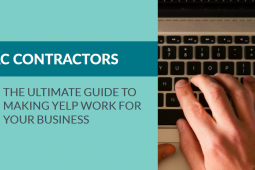If you run a plumbing business, you may have found yourself wondering if flat rate pricing is worth it. In recent years, flat rate pricing has increased in popularity among repair industry professionals, with many people extolling its benefits over traditional time and materials pricing. On the flip side of the coin, many others follow the “if it ain’t broke, don’t fix it” school of thought, and firmly believe that because time and materials (T&M) pricing has worked perfectly fine for decades, there’s no reason to change it now. So, is flat rate pricing worth it for plumbers, or are you better off sticking with the traditional pricing model? Let’s take a look at the differences between flat rate pricing and time and materials pricing.
Flat Rate vs. Time and Materials Pricing
Time and materials support the traditional pricing model used by the vast majority of plumbers. This pricing model focuses on the amount of time spent on the job and the cost of materials used for the repair. However, while T&M is the standard pricing model used by the vast majority of repair industry businesses, it’s rarely used in other industries. Flat rate pricing, on the other hand, focuses solely on the end result. This also happens to be the pricing model that consumers are most familiar (and therefore more comfortable) with.
Perhaps the best way to illustrate the difference between T&M and flat rate pricing is by using the following analogy: Let’s say you’re taking your wife on a second honeymoon to Belize. Because you’ve never been to Belize, you search for travel tips online and come across the following bit of advice:
“Before getting into a taxi, make sure you settle on an exact price, otherwise you’re likely to get ripped off.”
You plan on playing it safe and adhering to this bit of advice – after all, you don’t want to be taken advantage of. Unfortunately, when you arrive in Belize, your cab driver is unable to provide you with an exact price and says he must charge you based on mileage plus time. This, paired with the fact that you’re uncertain of the conversion from USD to Belizean currency, leaves you feeling powerless and concerned that you’re about to be taken advantage of, when in reality, your driver is likely a perfectly honest individual just trying to do his job.
Unfortunately, this is a common problem with time and materials pricing: your customers are left feeling powerless and unsure of the outcome. In fact, this may be the first time many of your customers are hiring a plumber and have probably been advised to question your pricing in order to avoid being taken advantage of.
Unfortunately, this starts your relationship off on the wrong foot, and can impact a customer’s sentiment towards your business. As illustrated in this hypothetical scenario, consumers simply tend to feel more comfortable with flat rate pricing. Not only does offering your customers a fixed rate foster a sense of transparency and trust, it also empowers your customers to make better-informed decisions. This, in turn, also has a positive impact on your business on several levels.
First and foremost, customers are more apt to agree to repairs if they have a clear understanding of precisely how much it will cost them. Because they’ve received a precise quote, there will be no unwelcome surprises when they receive their bill, making it easier for you to collect your payment when the job is done. Of course, beyond making it easier to collect payment, flat rate pricing can also cut down on negative online reviews. In fact, a case study of online reviews for plumbers found that a whopping 31.5% of negative online reviews relate to pricing issues, including unexpected charges, inaccurate billing, and overall price. As we’ve discussed in the past, negative online reviews have a huge impact on your business’ revenue by as much as $6,552 per employee, per year.
Another benefit to flat rate pricing? Because your customers aren’t paying an hourly rate, they’re less likely to hassle or micromanage your employees while they’re on the job. By the same token, your employees are less likely to unnecessarily drag out jobs, because the focus is now placed on productivity versus time. Also, another thing to keep in mind is that T&M pricing sets a limit on your profitability, whereas pricing that’s focused on productivity increases your potential revenue.
Of course, flat rate pricing does have a few minor disadvantages. As you’re well-aware, unforeseen issues do arise from time-to-time. Something that may have appeared to be a relatively simple job may in fact be a great deal more complicated than you first anticipated, making it impossible for you to stick to the flat rate price you initially quoted. For this reason, some plumbing businesses have opted to go with flat rate pricing for straightforward jobs, while sticking to a traditional pricing model for those that may be a bit more complex.
Another concern business owners should be aware of is how flat rate pricing can potentially impact quality of work. Because flat rate pricing places focus on productivity versus time spent, some workers may be tempted to rush through a job. If you have a team of trusted employees, this shouldn’t be a problem, although it is something you should be aware of.
Finally, calculating flat rate pricing can be complex, and if done incorrectly, it can have a negative impact on your bottom line. When determining your flat rate prices for your plumbing business, you must make sure you’re covering all your overhead expenses, including non-billable hours, supplies, and insurance. Ultimately, the goal is to find a flat rate that includes a reasonable profit that works for your business and is fair to your customers.
At the end of the day, a more positive transaction leads to happier customers, better online reviews, more referrals, and ultimately, more revenue for your business.




